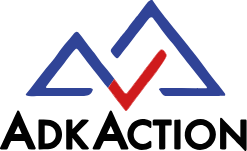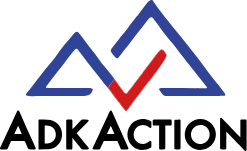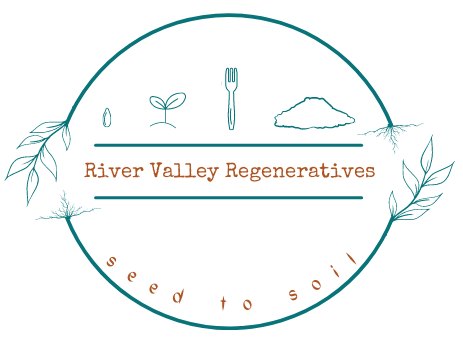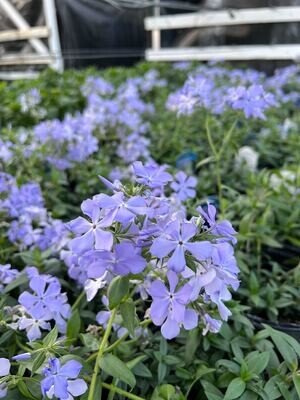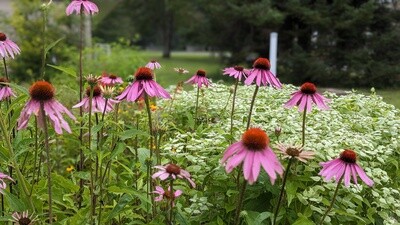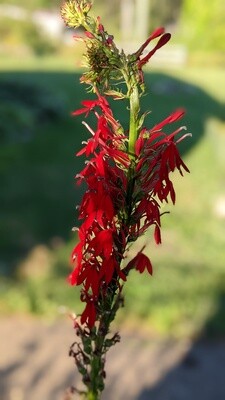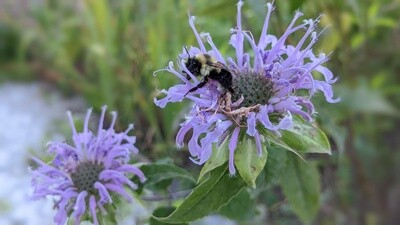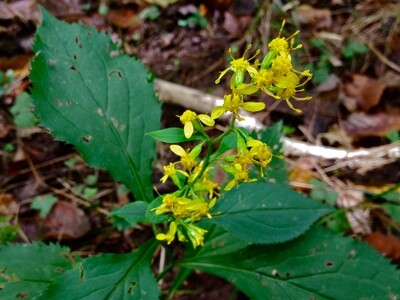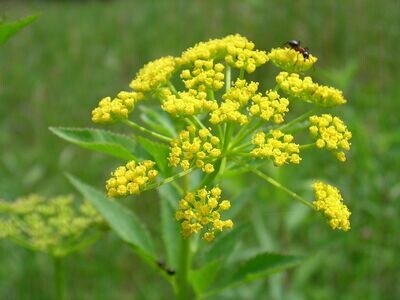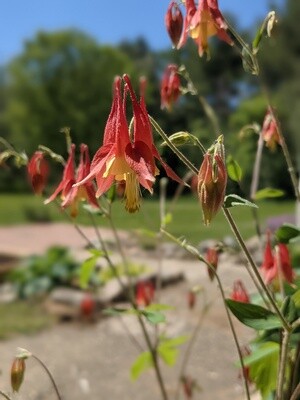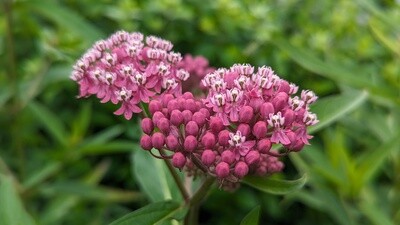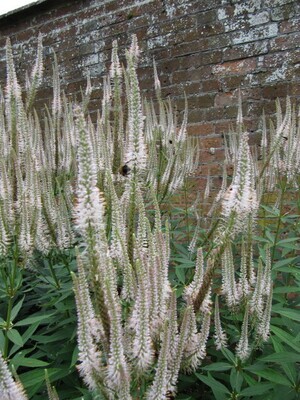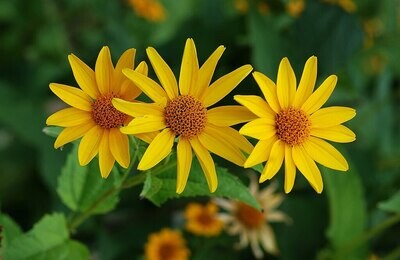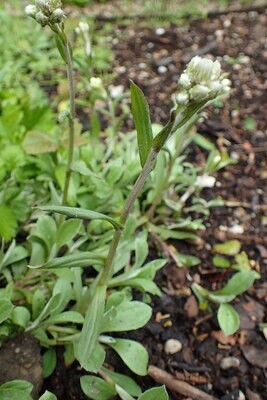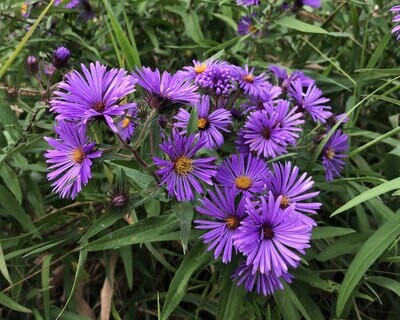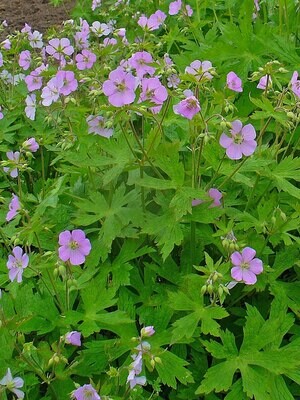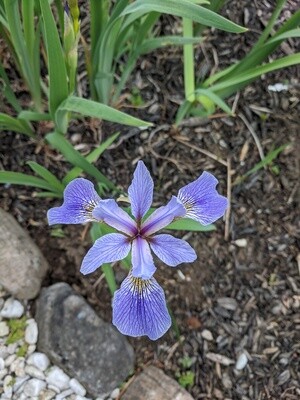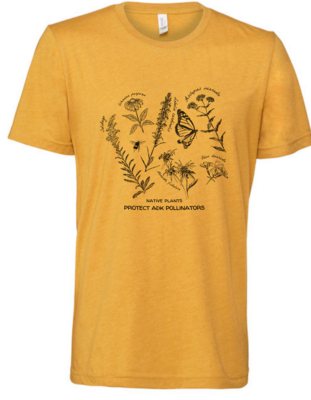Plant Sale
We’re celebrating our 7th Annual Pollinator-Friendly Native Plant Sale with a Pollinator Festival on June 1st, 9AM – 3PM at the scenic Uihlein Farm Greenhouse at 281 Bear Cub Road in Lake Placid. Pre-order your plants below to pick up at the festival!
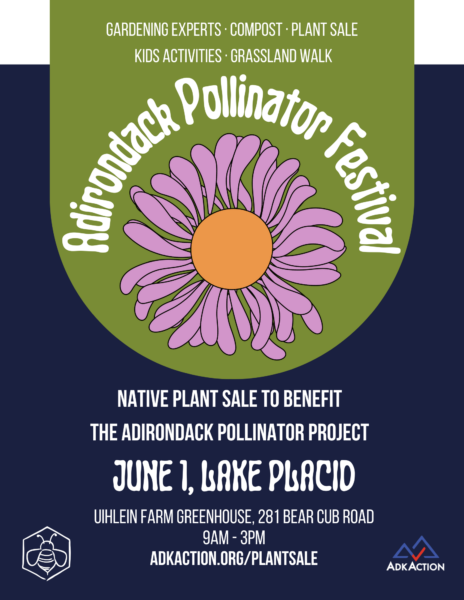
What else can I do at the festival?
Enjoy a stunning view of the high peaks from a historic greenhouse. Picnicking encouraged!
Cornell Cooperative Extension Master Gardeners will be on hand to answer your questions about planting and caring for your pollinator habitat.
Kids can take home free wildflower seed packets, participate in activity stations to learn about pollination, and get their faces painted with flowers, butterflies, bees, and other pollinators.
Join in a guided Grasslands Walk with local experts.
Learn about composting to restore Adirondack soils, and how to use compost in your pollinator garden.
This year, the Adirondack Pollinator Festival is teaming up with the Great Adirondack Birding Celebration hosted by our project partners Paul Smith’s VIC in conjunction with Heaven Hill and Uihlein Farm. ‘Bee’ sure to check out the birding events happening all weekend!
Thank You to Our Pollinator Festival Sponsors
Pollinator-Friendly Native Plant Sale
Thank you for supporting pollinator conservation efforts in the Adirondacks!
We are offering 15 varieties of native flowering plants, grown right here in the Adirondacks, to benefit pollinators that live here. These species are selected based on their presence in NY State, habitat value, and nutrition they offer to pollinators throughout the year. Each plant has been carefully sourced or grown from seed to ensure that they have never come in contact with neonicotinoids (a class of insecticides that are harmful to pollinators).
Preordered plants are to be picked up at Uihlein Farm Greenhouse, 281 Bear Cub Road, Lake Placid, NY on Saturday, June 1st between 9am - 3pm unless you make alternate arrangements with AdkAction.
Can a friend pick up my plants for me? Yes! We’ll send a reminder email prior to our plant pick-up day, including instructions for if you will have someone else picking up your plants.
Can I pick up my plants at a different time? Contact [email protected] for times that someone will be at the greenhouse (near the date of the plant sale) to to assist you with your pre-order pickup.
Can I buy more plants when picking up my order? If we haven’t sold out, you will have the opportunity to buy more during our pollinator fest at the greenhouse on June 1st.
*Please note: all plants available through this sale are grown naturally and are not treated with pesticides. As a result, they may have some insect damage, which is expected since these plants are safe for pollinators. Depending on growing conditions, we reserve the right to substitute similar plants or offer a refund at the time of pick-up to account for losses or other unforeseen issues. *
All proceeds will support the Adirondack Pollinator Project, a project of AdkAction in partnership with The Wild Center, Paul Smith’s College, and Northern New York Audubon.
Resources

Congratulations on your pollinator garden! You are making a difference. Your efforts are increasing populations of Monarch butterflies, native bees, hummingbirds, and other pollinators in the Adirondacks. Just imagine how beautiful and beneficial your garden will be as it grows and flourishes. To get you started and ensure your garden flourishes and expands its value for pollinators, we have some tips and tricks for you!
If you are adding plants to an existing garden
- Remove weeds while they are small in the spring, and keep up with weeding throughout the season. Weeds outcompete many plants, robbing them of moisture, nutrients, and sunlight.
- Prune all overwintered stalks to within 6” of the ground.
- Divide and transplant plants that are overgrown or crowding others. Dig, divide, and transplant clumps around the garden or better yet create new pollinator plantings.
- Remove any dead, weak, or infected plants.
- Replace plants that you’ve removed with the new plants you’ve purchased from our annual plant sale.
- Clean-up garden beds by removing any dead and infected plant material.
- Add compost or fertilizer to beds close to plants and gently work it into the soil being careful not to damage plant roots.
- Avoid mulch, or at least leave some areas of bare soil exposed for ground nesting bees. If you decide to mulch some areas, cover bare earth with weed suffocating mulch like straw, shredded leaves, grass clippings, newspapers, compost, or natural wood chips.
- Weed – yes, again. Diligence is a gardener’s most powerful ally. Deal with weeds as soon as they appear so that in the future you will be able to spend less time weeding and more time enjoying your garden.
If you are creating a new garden from scratch, you might consider a no-till garden installation that will keep soil structure and microbes intact, keep sequestered carbon in the soil, and prevent erosion. To start a no till garden:
- Select an area in your yard that will receive at least 6 hours of direct sunlight.
- Lay out material such as paper grocery store bags, cardboard, or newspapers.
- Use a hose with a wand attachment or a watering can to wet the material down.
- Cover the material with heavy compost and leaves, grass clippings, or pine needles. Lay the organic material on thick, ideally 12 inches, and water it well.
- Plant directly into the thick compost and mulch mix.
Planting Guides
Selecting Plants for Pollinators (Pollinator Partnership)
A regional guide for farmers, land managers, and gardeners in the Adirondacks and New England.
Pollinator Plants: Northeast Region (The Xerces Society: fact sheet)
Recommended native plants that are highly attractive to pollinators such as native bees, honey bees, butterflies, moths, and hummingbirds, and are well-suited for small-scale plantings in gardens, on business and school campuses, in urban greenspaces, and in farm field borders.
Native Plant Profiles and Lists (Lady Bird Johnson Wildflower Center: web site resource)
The Xerces Society has collaborated with the Lady Bird Johnson Wildflower Center to create plant lists that are attractive to native bees, bumble bees, honey bees, and other beneficial insects, as well as plant lists with value as nesting materials for native bees. These lists can be narrowed down with additional criteria such as state, soil moisture, bloom time, and sunlight requirements.
Regional Milkweed Guides A series of regional guides to the native milkweeds of North America, developed in cooperation with the USDA Natural Resources Conservation Service.
Monarch Nectar Plant Guides While native milkweed is critical to support of monarch breeding, these regional guides were created to address a need for evidence-based, monarch-specific nectar plants throughout the U.S. These guides were developed in partnership with the Monarch Joint Venture and National Wildlife Federation and are geared toward gardeners and landscape designers but are also be useful for land managers who are implementing large-scale monarch restoration projects.
Pollinator-Friendly Plants for the Northeast United States (USDA-NRCS: web site resource)
An in-depth guide to pollinator-friendly plants of the Northeast United States.
Xerces Society Pollinator Habitat Installation Guides (The Xerces Society: conservation guides)
These regional guidelines provide in-depth practical guidance on how to install nectar and pollen habitat for bees in the form of wildflower meadow plantings or linear rows of native flowering shrubs.
New England Pollinator Habitat Installation Guide: Conservation Cover (Draft)
New England Pollinator Biology and Habitat (USDA-NRCS: technical note)
An extremely lengthy, in-depth guide to bee conservation in New England. The document includes an overview of native bee and honey bee biology, farm management practices that impact pollinators, a color photo guide to common bee genera, and list of regionally appropriate plants for habitat restoration efforts on pages 25-38.
Field Conservation Management of Native Leafcutting and Mason Osmia Bees (University of Maine: Extension fact sheet)
This document includes information on the natural history of tunnel nesting native bees and how to enhance forage resources and improve nesting sites.
Indigenous Bees and Wild Blueberry Pollination (Nova Scotia Agricultural College: fact sheet)
An overview of native bee blueberry pollinators in Nova Scotia.
Wild Pollinators of Eastern Apple Orchards (Second Edition)
Produced by Cornell University, Penn State University, The Xerces Society, Northeastern IPM Center, USDA Department of Agriculture, and USDA National Institute of Food and Agriculture. This book includes a photo guide to bees most important to apple production in the East, steps to conserving wild bee populations, plant recommendations to enhance habitat, summary of bee toxicities for commonly used orchard pesticides, and links to additional information.
